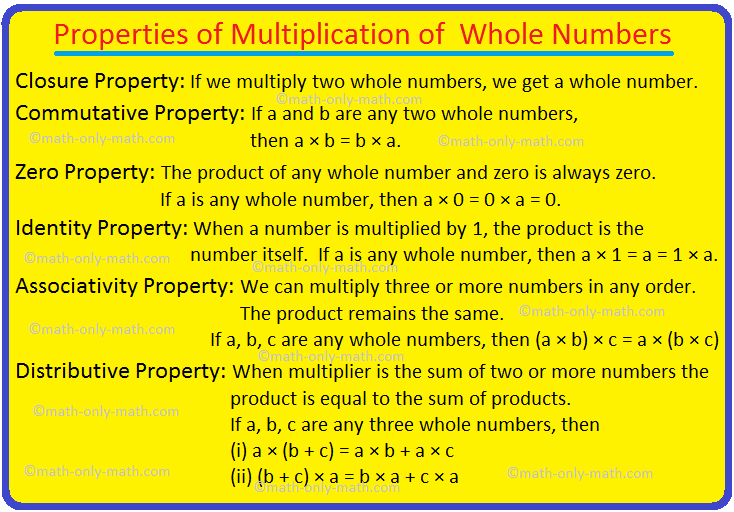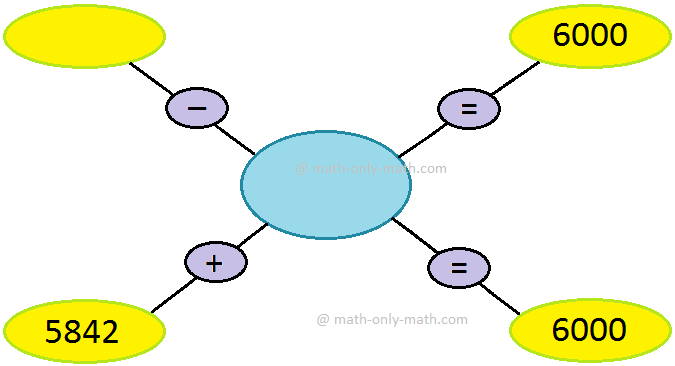Inverse Trigonometric Function Formula
We will discuss the list of inverse trigonometric function formula which will help us to solve different types of inverse circular or inverse trigonometric function.
(i) sin (sin\(^{-1}\) x) = x and sin\(^{-1}\) (sin θ) = θ, provided that - \(\frac{π}{2}\) ≤ θ ≤ \(\frac{π}{2}\) and - 1 ≤ x ≤ 1.
(ii) cos (cos\(^{-1}\) x) = x and cos\(^{-1}\) (cos θ) = θ, provided that 0 ≤ θ ≤ π and - 1 ≤ x ≤ 1.
(iii) tan (tan\(^{-1}\) x) = x and tan\(^{-1}\) (tan θ) = θ, provided that - \(\frac{π}{2}\) < θ < \(\frac{π}{2}\) and - ∞ < x < ∞.
(iv) csc (csc\(^{-1}\) x) = x and sec\(^{-1}\) (sec θ) = θ, provided that - \(\frac{π}{2}\) ≤ θ < 0 or 0 < θ ≤ \(\frac{π}{2}\) and - ∞ < x ≤ 1 or -1 ≤ x < ∞.
(v)
sec (sec\(^{-1}\) x) = x and sec\(^{-1}\) (sec θ) = θ, provided that 0 ≤ θ ≤
\(\frac{π}{2}\) or \(\frac{π}{2}\) <
θ ≤ π and - ∞ < x ≤ 1 or 1 ≤ x < ∞.
(vi) cot (cot\(^{-1}\) x) = x and cot\(^{-1}\) (cot θ) = θ, provided that 0 < θ < π and - ∞ < x < ∞.
(vii) The function sin\(^{-1}\) x is defined if – 1 ≤ x ≤ 1; if θ be the principal value of sin\(^{-1}\) x then - \(\frac{π}{2}\) ≤ θ ≤ \(\frac{π}{2}\).
(viii) The function cos\(^{-1}\) x is defined if – 1 ≤ x ≤ 1; if θ be the principal value of cos\(^{-1}\) x then 0 ≤ θ ≤ π.
(ix) The function tan\(^{-1}\) x is defined for any real value of x i.e., - ∞ < x < ∞; if θ be the principal value of tan\(^{-1}\) x then - \(\frac{π}{2}\) < θ < \(\frac{π}{2}\).
(x) The function cot\(^{-1}\) x is defined when - ∞ < x < ∞; if θ be the principal value of cot\(^{-1}\) x then - \(\frac{π}{2}\) < θ < \(\frac{π}{2}\) and θ ≠ 0.
(xi) The function sec\(^{-1}\) x is defined when, I x I ≥ 1 ; if θ be the principal value of sec\(^{-1}\) x then 0 ≤ θ ≤ π and θ ≠ \(\frac{π}{2}\).
(xii) The function csc\(^{-1}\) x is defined if I x I ≥ 1; if θ be the principal value of csc\(^{-1}\) x then - \(\frac{π}{2}\) < θ < \(\frac{π}{2}\) and θ ≠ 0.
(xiii) sin\(^{-1}\) (-x) = - sin\(^{-1}\) x
(xiv) cos\(^{-1}\) (-x) = π - cos\(^{-1}\) x
(xv) tan\(^{-1}\) (-x) = - tan\(^{-1}\) x
(xvi) csc\(^{-1}\) (-x) = - csc\(^{-1}\) x
(xvii) sec\(^{-1}\) (-x) = π - sec\(^{-1}\) x
(xviii) cot\(^{-1}\) (-x) = cot\(^{-1}\) x
(xix) In numerical problems principal values of inverse circular functions are generally taken.
(xx) sin\(^{-1}\) x + cos\(^{-1}\) x = \(\frac{π}{2}\)
(xxi) sec\(^{-1}\) x + csc\(^{-1}\) x = \(\frac{π}{2}\).
(xxii) tan\(^{-1}\) x + cot\(^{-1}\) x = \(\frac{π}{2}\)
(xxiii) sin\(^{-1}\) x + sin\(^{-1}\) y = sin\(^{-1}\) (x \(\sqrt{1 - y^{2}}\) + y\(\sqrt{1 - x^{2}}\)), if x, y ≥ 0 and x\(^{2}\) + y\(^{2}\) ≤ 1.
(xxiv) sin\(^{-1}\) x + sin\(^{-1}\) y = π - sin\(^{-1}\) (x \(\sqrt{1 - y^{2}}\) + y\(\sqrt{1 - x^{2}}\)), if x, y ≥ 0 and x\(^{2}\) + y\(^{2}\) > 1.
(xxv) sin\(^{-1}\) x - sin\(^{-1}\) y = sin\(^{-1}\) (x \(\sqrt{1 - y^{2}}\) - y\(\sqrt{1 - x^{2}}\)), if x, y ≥ 0 and x\(^{2}\) + y\(^{2}\) ≤ 1.
(xxvi) sin\(^{-1}\) x - sin\(^{-1}\) y = π - sin\(^{-1}\) (x \(\sqrt{1 - y^{2}}\) - y\(\sqrt{1 - x^{2}}\)), if x, y ≥ 0 and x\(^{2}\) + y\(^{2}\) > 1.
(xxvii) cos\(^{-1}\) x + cos\(^{-1}\) y = cos\(^{-1}\)(xy - \(\sqrt{1 - x^{2}}\)\(\sqrt{1 - y^{2}}\)), if x, y > 0 and x\(^{2}\) + y\(^{2}\) ≤ 1.
(xxviii) cos\(^{-1}\) x + cos\(^{-1}\) y = π - cos\(^{-1}\)(xy - \(\sqrt{1 - x^{2}}\)\(\sqrt{1 - y^{2}}\)), if x, y > 0 and x\(^{2}\) + y\(^{2}\) > 1.
(xxix) cos\(^{-1}\) x - cos\(^{-1}\) y = cos\(^{-1}\)(xy + \(\sqrt{1 - x^{2}}\)\(\sqrt{1 - y^{2}}\)), if x, y > 0 and x\(^{2}\) + y\(^{2}\) ≤ 1.
(xxx) cos\(^{-1}\) x - cos\(^{-1}\) y = π - cos\(^{-1}\)(xy + \(\sqrt{1 - x^{2}}\)\(\sqrt{1 - y^{2}}\)), if x, y > 0 and x\(^{2}\) + y\(^{2}\) > 1.
(xxxi) tan\(^{-1}\) x + tan\(^{-1}\) y = tan\(^{-1}\) (\(\frac{x + y}{1 - xy}\)), if x > 0, y > 0 and xy < 1.
(xxxii) tan\(^{-1}\) x + tan\(^{-1}\) y = π + tan\(^{-1}\) (\(\frac{x + y}{1 - xy}\)), if x > 0, y > 0 and xy > 1.
(xxxiii) tan\(^{-1}\) x + tan\(^{-1}\) y = tan\(^{-1}\) (\(\frac{x + y}{1 - xy}\)) - π, if x < 0, y > 0 and xy > 1.
(xxxiv) tan\(^{-1}\) x + tan\(^{-1}\) y + tan\(^{-1}\) z = tan\(^{-1}\) \(\frac{x + y + z - xyz}{1 - xy - yz - zx}\)
(xxxv) tan\(^{-1}\) x - tan\(^{-1}\) y = tan\(^{-1}\) (\(\frac{x - y}{1 + xy}\))
(xxxvi) 2 sin\(^{-1}\) x = sin\(^{-1}\) (2x\(\sqrt{1 - x^{2}}\))
(xxxvii) 2 cos\(^{-1}\) x = cos\(^{-1}\) (2x\(^{2}\) - 1)
(xxxviii) 2 tan\(^{-1}\) x = tan\(^{-1}\) (\(\frac{2x}{1 - x^{2}}\)) = sin\(^{-1}\) (\(\frac{2x}{1 + x^{2}}\)) = cos\(^{-1}\) (\(\frac{1 - x^{2}}{1 + x^{2}}\))
(xxxix) 3 sin\(^{-1}\) x = sin\(^{-1}\) (3x - 4x\(^{3}\))
(xxxx) 3 cos\(^{-1}\) x = cos\(^{-1}\) (4x\(^{3}\) - 3x)
(xxxxi) 3 tan\(^{-1}\) x = tan\(^{-1}\) (\(\frac{3x - x^{3}}{1 - 3x^{2}}\))
● Inverse Trigonometric Functions
- General and Principal Values of sin\(^{-1}\) x
- General and Principal Values of cos\(^{-1}\) x
- General and Principal Values of tan\(^{-1}\) x
- General and Principal Values of csc\(^{-1}\) x
- General and Principal Values of sec\(^{-1}\) x
- General and Principal Values of cot\(^{-1}\) x
- Principal Values of Inverse Trigonometric Functions
- General Values of Inverse Trigonometric Functions
- arcsin(x) + arccos(x) = \(\frac{π}{2}\)
- arctan(x) + arccot(x) = \(\frac{π}{2}\)
- arctan(x) + arctan(y) = arctan(\(\frac{x + y}{1 - xy}\))
- arctan(x) - arctan(y) = arctan(\(\frac{x - y}{1 + xy}\))
- arctan(x) + arctan(y) + arctan(z)= arctan\(\frac{x + y + z – xyz}{1 – xy – yz – zx}\)
- arccot(x) + arccot(y) = arccot(\(\frac{xy - 1}{y + x}\))
- arccot(x) - arccot(y) = arccot(\(\frac{xy + 1}{y - x}\))
- arcsin(x) + arcsin(y) = arcsin(x \(\sqrt{1 - y^{2}}\) + y\(\sqrt{1 - x^{2}}\))
- arcsin (x) - arcsin(y) = arcsin (x \(\sqrt{1 - y^{2}}\) - y\(\sqrt{1 - x^{2}}\))
- arccos (x) + arccos(y) = arccos(xy - \(\sqrt{1 - x^{2}}\)\(\sqrt{1 - y^{2}}\))
- arccos(x) - arccos(y) = arccos(xy + \(\sqrt{1 - x^{2}}\)\(\sqrt{1 - y^{2}}\))
- 2 arcsin(x) = arcsin(2x\(\sqrt{1 - x^{2}}\))
- 2 arccos(x) = arccos(2x\(^{2}\) - 1)
- 2 arctan(x) = arctan(\(\frac{2x}{1 - x^{2}}\)) = arcsin(\(\frac{2x}{1 + x^{2}}\)) = arccos(\(\frac{1 - x^{2}}{1 + x^{2}}\))
- 3 arcsin(x) = arcsin(3x - 4x\(^{3}\))
- 3 arccos(x) = arccos(4x\(^{3}\) - 3x)
- 3 arctan(x) = arctan(\(\frac{3x - x^{3}}{1 - 3 x^{2}}\))
- Inverse Trigonometric Function Formula
- Principal Values of Inverse Trigonometric Functions
- Problems on Inverse Trigonometric Function
11 and 12 Grade Math
From Inverse Trigonometric Function Formula to HOME PAGE
Didn't find what you were looking for? Or want to know more information about Math Only Math. Use this Google Search to find what you need.
Recent Articles
-
Properties of Multiplication | Multiplicative Identity | Whole Numbers
Jan 15, 25 12:08 AM
There are six properties of multiplication of whole numbers that will help to solve the problems easily. The six properties of multiplication are Closure Property, Commutative Property, Zero Property… -
Multiplication Table | Learn Tables from 0 – 25 | Multiplication Table
Jan 14, 25 11:53 PM
In math multiplication table we will learn the tables from 0 – 25. These multiplication tables help the students to learn the essential multiplication facts. Multiplication tables are very important f… -
3rd Grade Math Worksheets |3rd Grade Math Sheets|3rd Grade Math Lesson
Jan 14, 25 11:02 PM
3rd grade math worksheets is carefully planned and thoughtfully presented on mathematics for the students. Teachers and parents can also follow the worksheets to guide the students. -
3rd Grade Subtraction Worksheet | 3-Digit Subtraction Worksheets | Ans
Jan 14, 25 01:57 PM
In 3th Grade Addition Worksheet we will solve how to subtract 3-digit numbers by expansion, subtraction of 3-digit numbers without regrouping, subtraction of 3-digit numbers with regrouping, propertie… -
Facts about Subtraction | Subtraction of Small Numbers|Solved Examples
Jan 14, 25 12:29 AM
The operation to finding the difference between two numbers is called subtraction. Let us know some facts about subtraction which will help us to learn subtraction of large numbers. 1. Subtraction wit…





New! Comments
Have your say about what you just read! Leave me a comment in the box below. Ask a Question or Answer a Question.